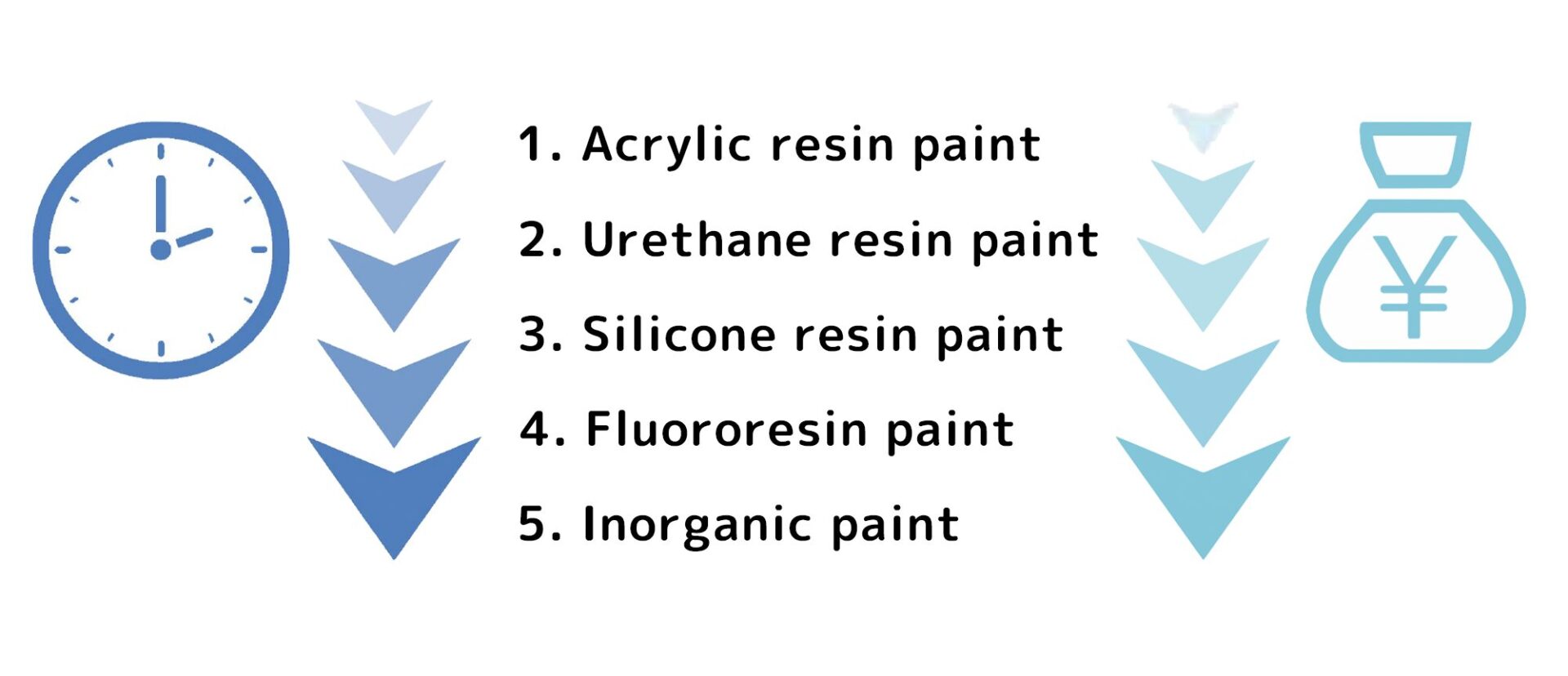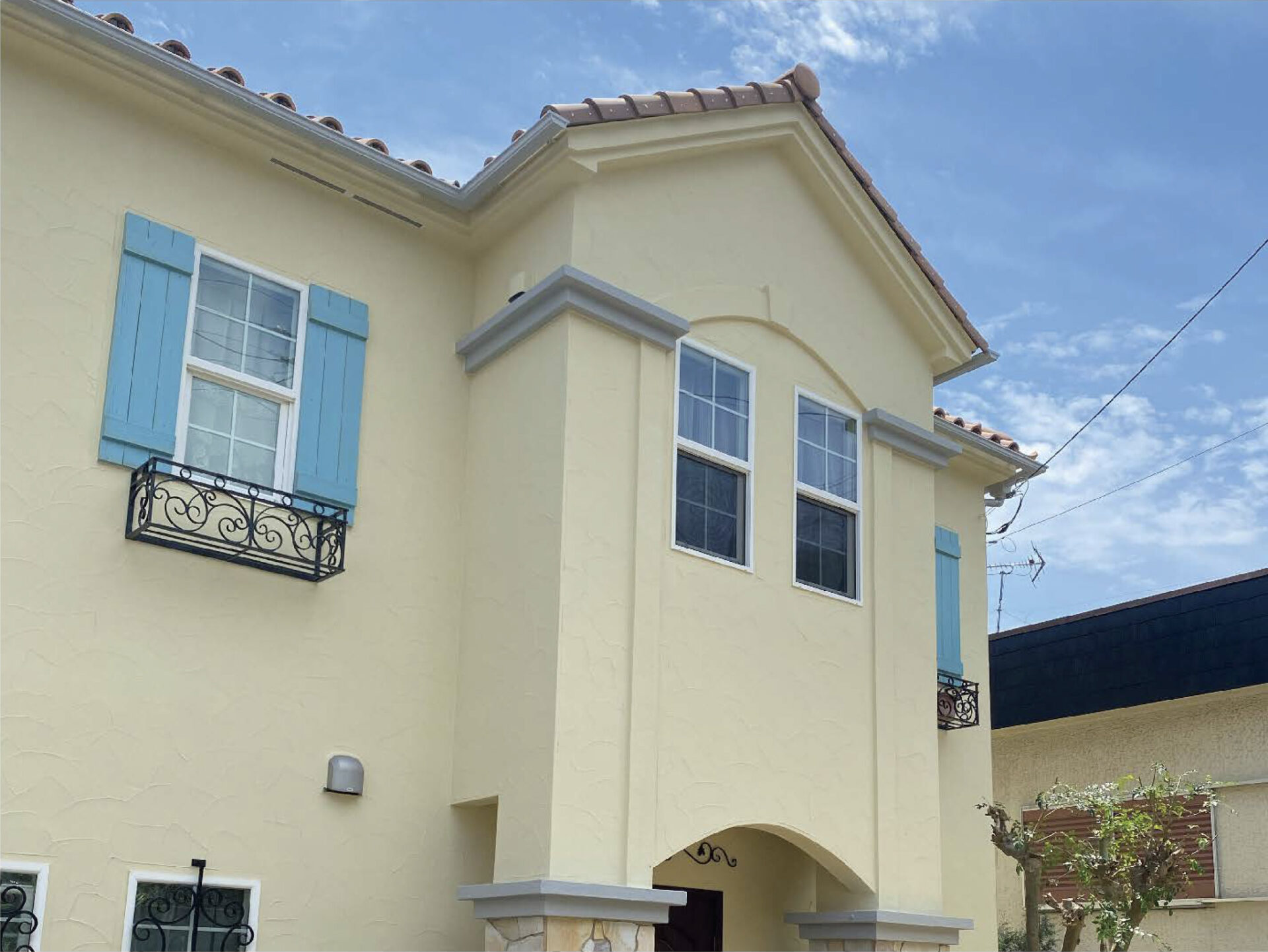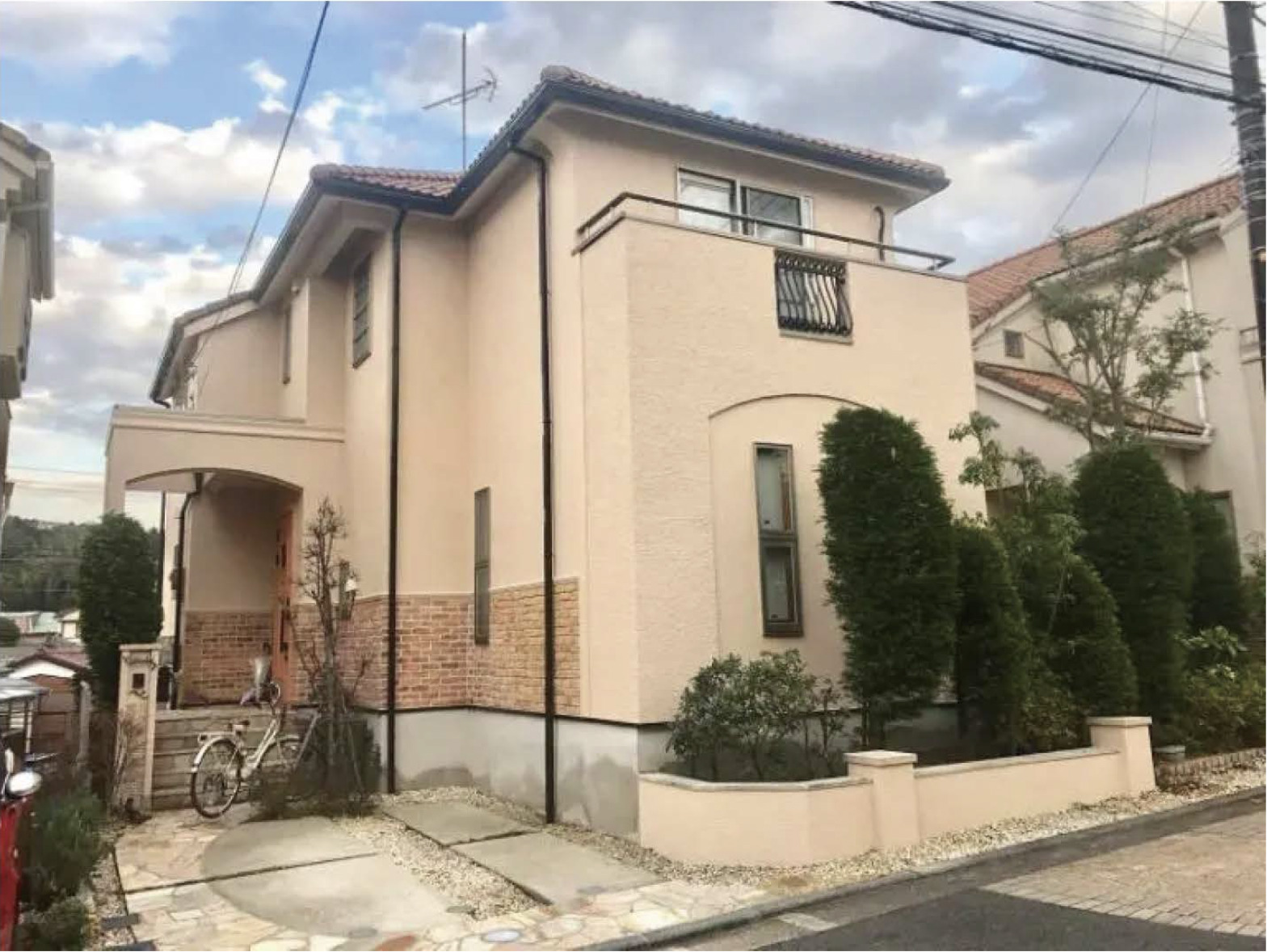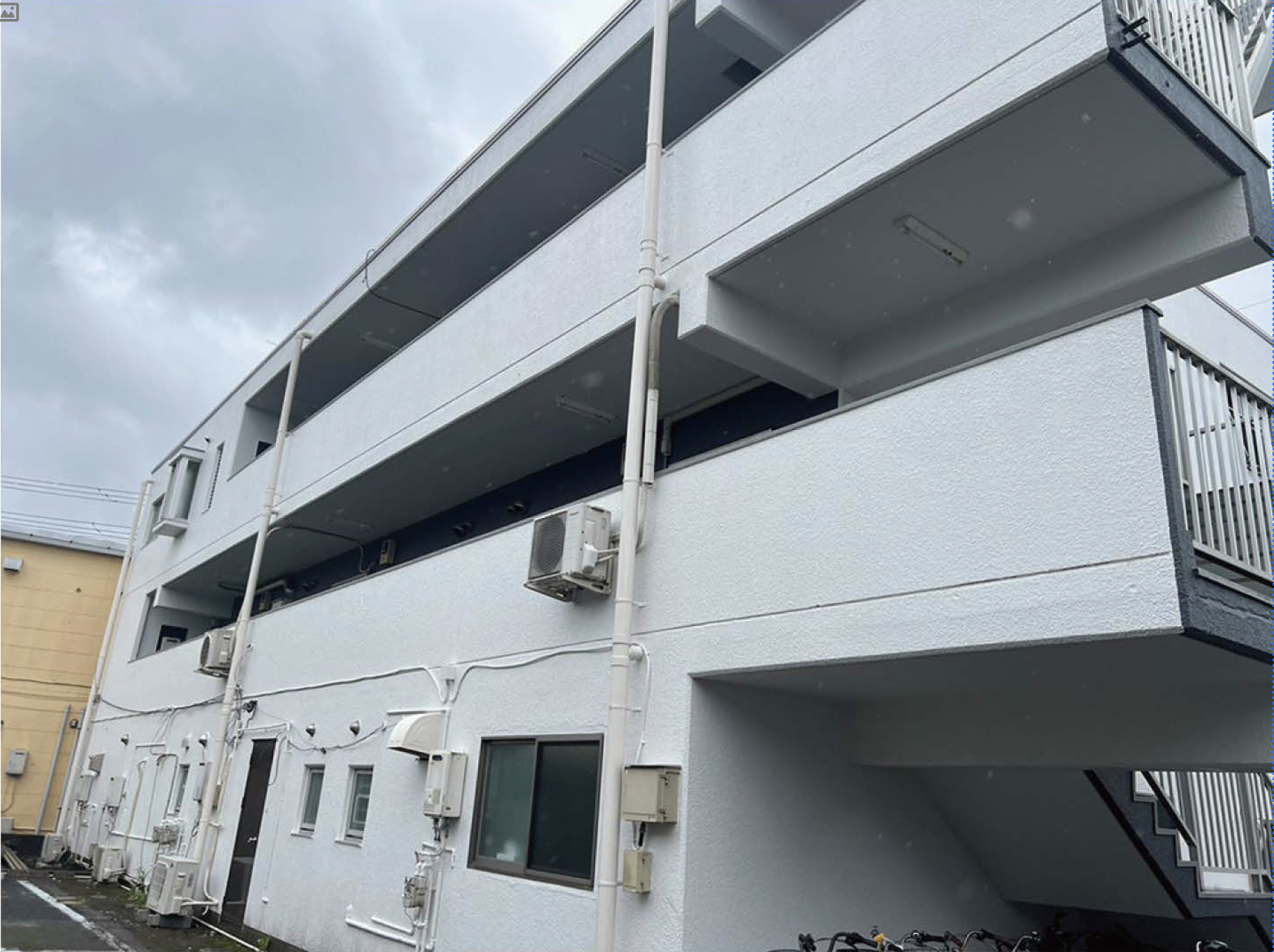Types of paints and how to choose
Type of paint
Paints currently used in homes can be broadly classified into five categories based on their ingredients. The lower you go, the longer the lifespan and the higher the price.

*Although this is generally widely used information, there are some silicone ballast paints on the market that are inferior to urethane resin paints, so it should not be taken with a grain of salt.
01
Acrylic resin paint
Acrylic resin paint is the cheapest, but its short service life makes it uneconomical, so it is rarely used these days. However, acrylic is still often used in new construction to reduce total construction costs. Therefore, it is necessary to repaint H as soon as possible after building a new house.


02
Urethane resin paint / silicone resin paint
Currently, most of the paint used to repaint detached houses is urethane resin paint or silicone resin paint. However, it does not mean that it will last 10 to 15 years because it is silicone. Even the same silicone paint can range from less than 10,000 yen per can to more than 50,000 yen per can.
This may be a bit technical, but I think it would be a good idea to refer to the standards for accelerated weathering tests stipulated by the JIS. To put it simply, it measures how many hours a paint film can withstand without deteriorating by continuously damaging the paint film with a machine, and if you are familiar with the Internet, you may be able to find out for yourself. There are several test methods and the content can be a little difficult, so if you request we will give you advice on the correct way to look at it.
03
About ceramic paint
"If you use this paint, it will be semi-permanent." This is another sales pitch from companies that should not be taken advantage of.
This phrase was often heard when ceramic paints were just starting to become popular, but it seems that there was also a problem with the way paint manufacturers communicated their ideas.
A quick look at the catalog would make you think, "Semi-permanent color that won't fade! It won't get dirty!" At that time, many customers requested ceramic paint.
However, there is no such thing as semi-permanent paint in this book, and the correct term is ``paint mixed with ceramic.''
If all of the paint's components are ceramic components, a hydrophilic effect can be expected, but in reality, the ceramic components are just mixed into the paint, so not all of the paint film will be hydrophilic. is. Also, although the catalog says ``ceramic ingredients,'' I don't know how much ceramic ingredients are included in the paint.
In this sense, the effectiveness of ceramic in preventing stains is unknown. Furthermore, it is impossible to say that ``if you apply ceramic paint, it will be semi-permanent.''The lifespan of paint is determined by its resin (acrylic, urethane, silicone, fluorine).
Since it's a ceramic paint, it doesn't really matter whether it lasts long or not. There is no such thing as ceramic resin paint.


04
About photocatalytic paint
This is a mechanism that uses sunlight to create a hydrophilic coating, which has a very high antifouling effect. However, this effect cannot be expected in areas of the large intestine that are difficult to reach, so there may be an extreme difference in the level of dirt between the north and south sides of a building. Also, like fluorocarbon resin paint, it only creates a thin film on the exterior surface, so it cannot prevent structural distortion of the entire house or deformation of the base. Therefore, even if you use an expensive photocatalyst, it will end up being uneconomical if you need to repaint it every 15 years or so.
*The largest photocatalyst paint was discontinued in 2017. (Because there were many problems)
05
About inorganic paints
Inorganic refers to "organic/inorganic matter". It's easy to understand when you think of glass or minerals, but since they are not destroyed by ultraviolet rays, they can maintain their beauty for a long time. This is the slogan of paint manufacturers.
The correct answer for inorganic paints is ``paints that combine inorganic materials with organic materials.'' If there are too many inorganic substances, the paint film will be hard and break easily, and if there are too few inorganic substances, the paint will not be much different from ordinary urethane or silicone paints.
The composition balance of inorganic paints is very important, but it actually varies depending on the paint manufacturer. If you do not use a contractor who can carefully judge the type of paint you are using, you may run into trouble later on.
By doing thorough research and applying inorganic paint, you can extend the lifespan of your home! I think it is okay to paint the house if it has been approved.
There are only a limited number of external surfaces that can be coated with inorganic paints. Inorganic paint will last a long time in any home! That's a strange story.
*When painting with inorganic paint, I think you can rest assured if you use an ultra-durable sealant and an ultra-durable accessory paint. However, there seem to be some manufacturers who use ultra-durable sealants (e.g. Exceed) on silicone paints, thinking it's a trendy thing, but that doesn't make much sense.









